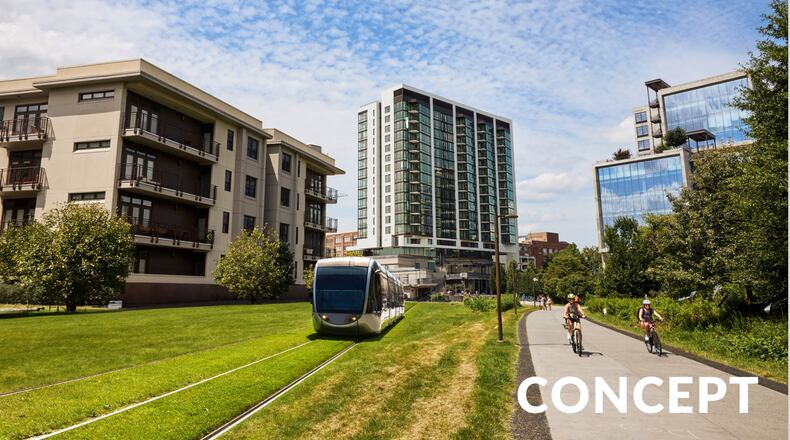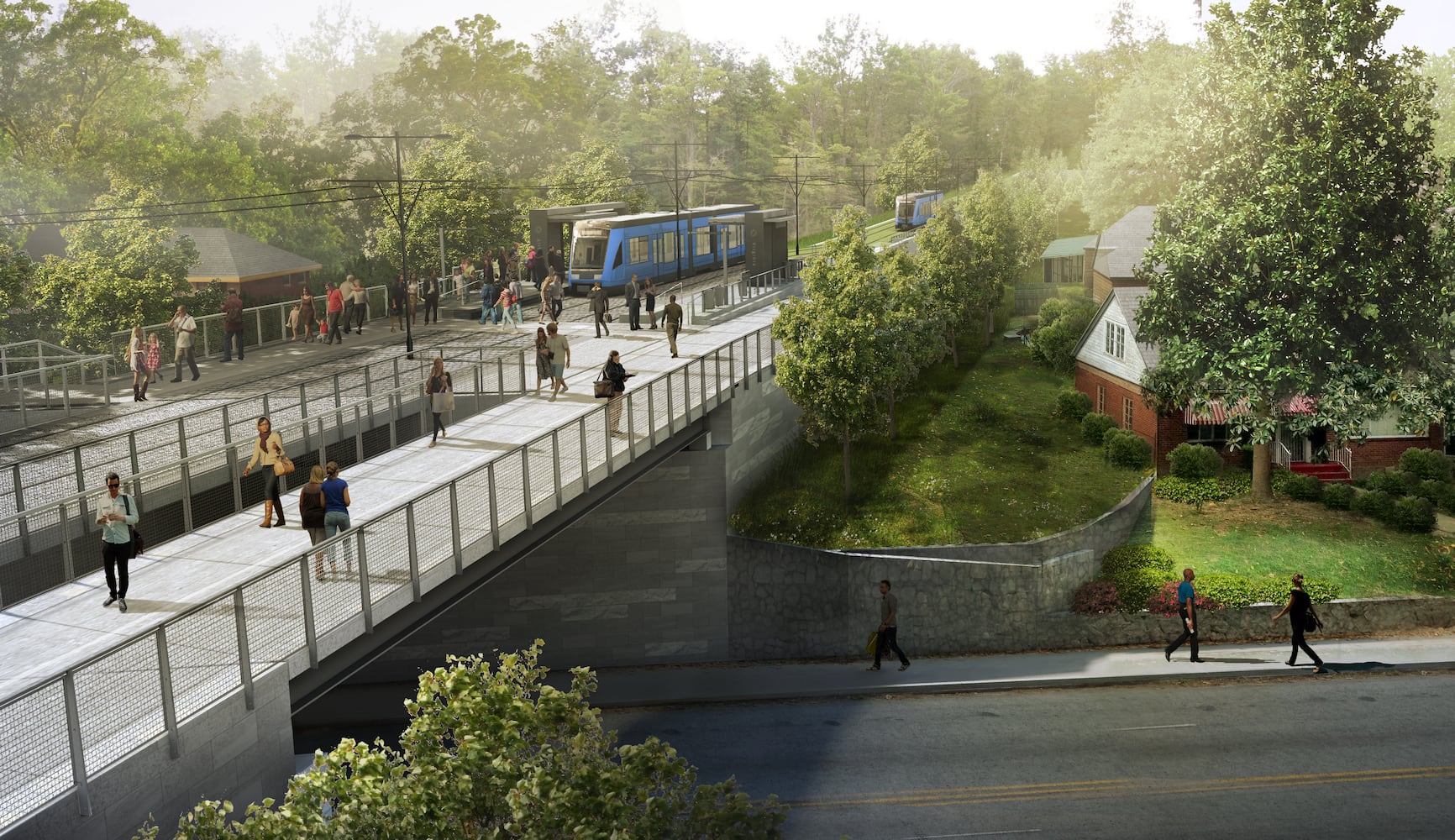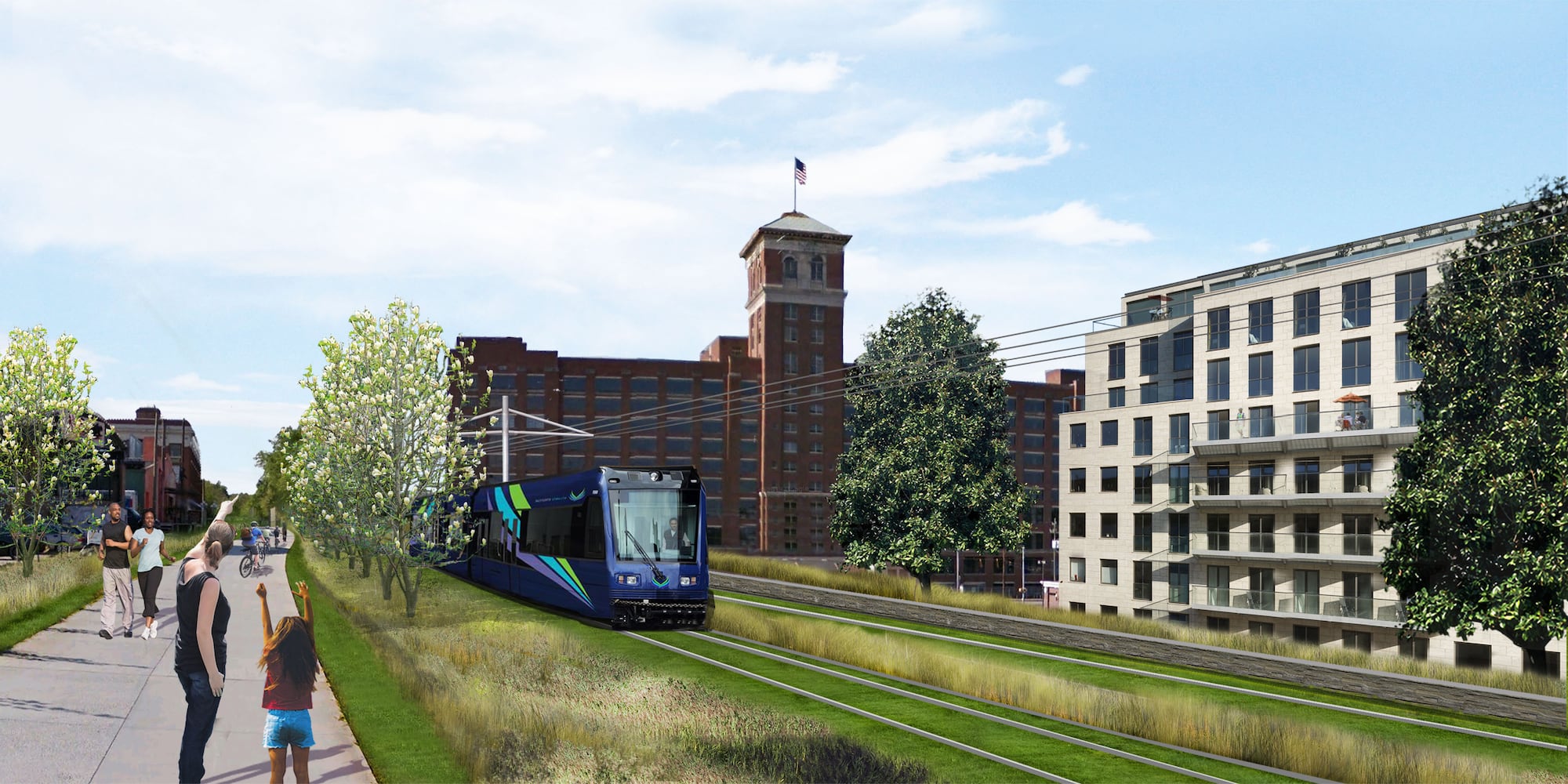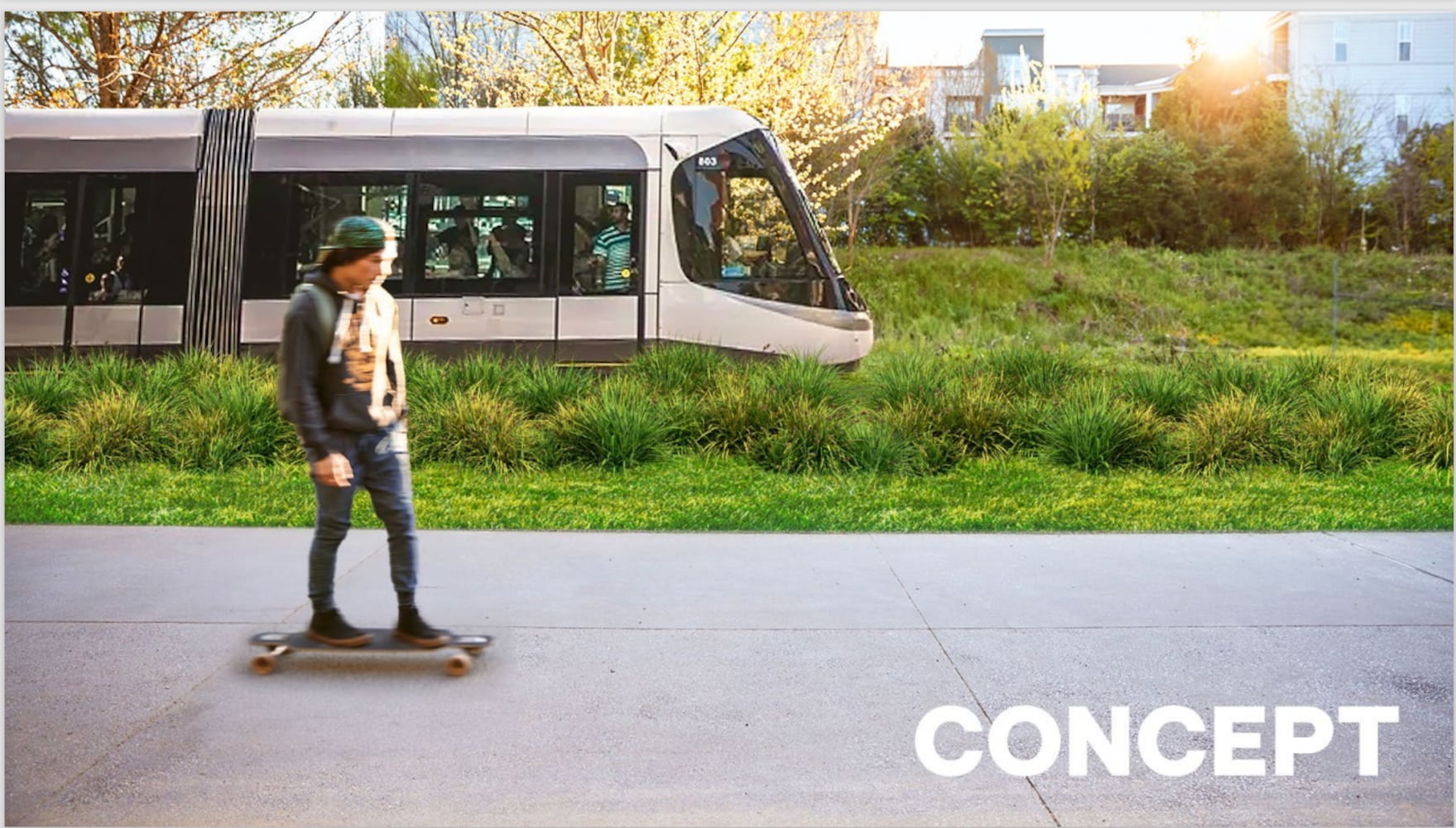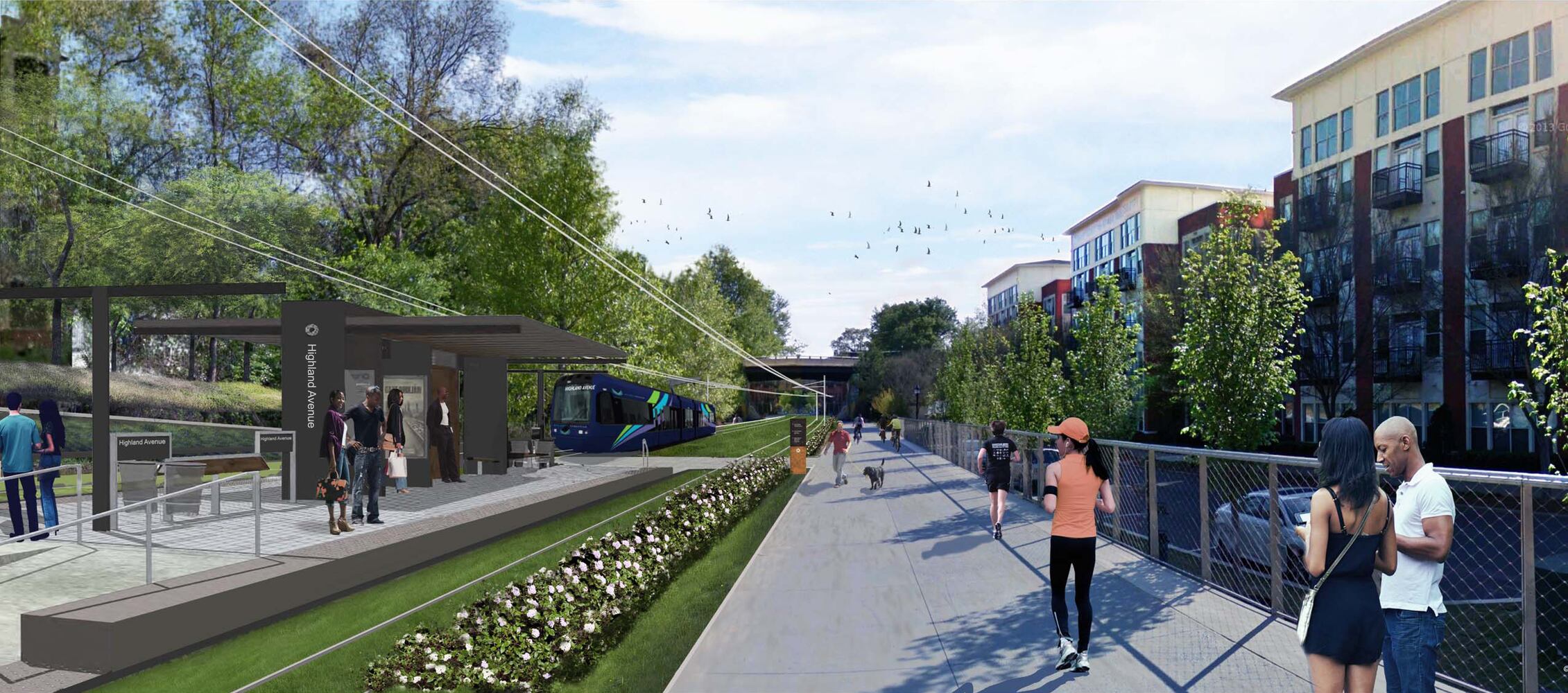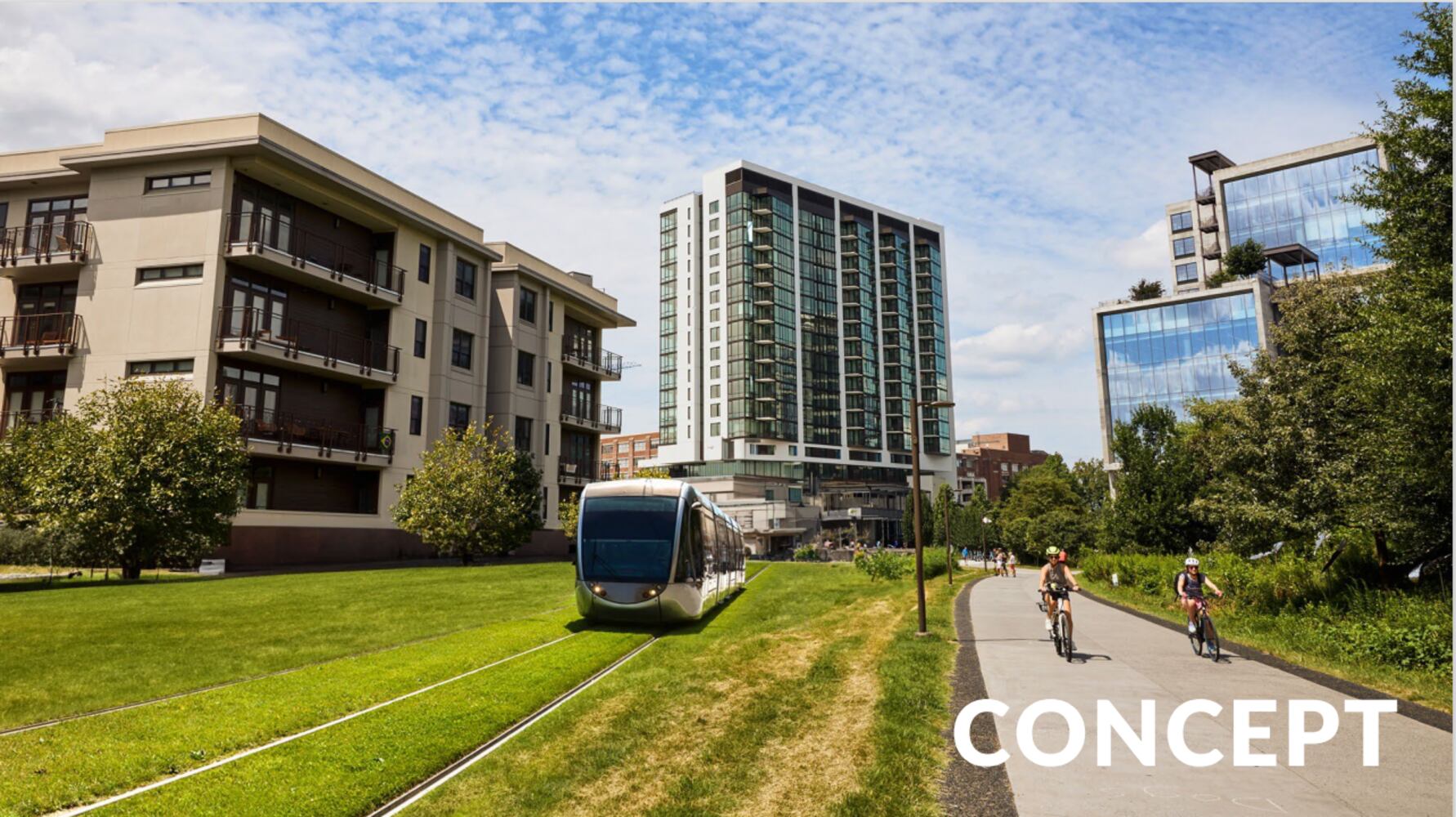Since its inception more than two decades ago, the Beltline has been envisioned as a 22-mile loop of trails, parks and transit that connects dozens of intown Atlanta neighborhoods.
At the “State of the Beltline” event on Tuesday, Beltline and city leaders said transit is vital to its future and pushed back against an opposition group that has urged the city to drop light rail transit from the project.
“The promise of transit will serve to integrate with, and not disrupt, what Atlanta has already fallen in love with on the Beltline,” Atlanta Mayor Andre Dickens said early Tuesday morning.
Rail has been in the works since the Beltline was envisioned by Ryan Gravel in a 1999 master’s thesis at Georgia Tech. Gravel sketched plans for converting abandoned rail lines into a loop.
The idea was featured in a transit expansion proposal that Atlanta voters approved in 2016 but — unlike the quick construction of trail segments and parks — it has been slow to get off the ground.
But residents who frequently walk the Beltline for recreation or use it to bike to work fear light rail would negatively impact the experience on the trails.
Now, with more than 80% of the trail system either completed or under construction, project stakeholders are setting their sights on following through with the transit plan, which is seen as part of the solution to the city’s overarching transportation woes.
At the annual event, which was held near MARTA’s Lindbergh station in Buckhead, Beltline CEO Clyde Higgs called transit along the trails “part of the original DNA of our project.”
“We have to give people options to get around the city and this is not necessarily for me or for you, it’s really for our grandkids, our great grandkids,” Higgs said. “What are we going to do to set them up for success?”
Higgs, MARTA leaders, elected officials and real estate developers all outlined the need for a light rail system as the city’s population is expected to continue to grow and companies move to Atlanta to set up shop for their workforce.
Atlanta City Council President Doug Shipman said that transit along the Beltline has been approved by voters, the city council and neighborhood associations.
“Transit has always been a part of what the Beltline is for and what it is intended to do,” he told The Atlanta Journal-Constitution. “We need transit on the Beltline.”
Others disagree.
Better Atlanta Transit, a group opposed to the idea, is calling for further public engagement around the transit proposal.
“A disruptive streetcar on the Beltline may take away things Atlantans love and damage the Beltline as we know it today — a beautiful green trail that thousands of people use every day,” said Billy Linville, with Better Atlanta Transit.
“Let’s have a public discussion about our transit needs throughout the city before we commit to billions of taxpayers’ dollars on a streetcar that will take decades to build,” he said.
Higgs said Tuesday that he sees the majority of the debate as an issue of aesthetics.
“We don’t need a concrete monstrosity that is in the middle of the Beltline,” he said. “We can use bushes and trees as a way to create barriers between the trail and transit.”
Renderings of the transit plan displayed on Tuesday show tracks overlaid with grass and while an overhead wire system weaves through trees.
Jim Irwin, president of New City Properties, said that one-third of the employees at MailChimp, which leases a 300,000 square feet space on Ralph McGill Boulevard in the Fourth Ward, use the eastern segment of the Beltline walking trail to get to work.
Supporters of the plan call it crucial to help workers commute around the city and even to help shoulder an influx of visitors for big events like concerts and sports events.
Collie Greenwood, CEO of MARTA, likened the plan to European light rail systems in Paris and Barcelona.
“There is this kind of organic, innate coexistence of pedestrians and mass transit,” he said. “Ideally, that’s the kind of gift that we could bring here in Atlanta.”
Within the next year, more than 85% of the Beltline will be either completed or under construction with the entire trail system expected to be done by 2030. The full loop will be made up of 22 miles of main trail and 11 miles of connector trail.
“The trail construction has an enormous amount of momentum,” Shipman said. “There is funding in place, there’s design in place and you’re continuing to see enormous development — both residential and commercial development.”
Beltline leaders face the challenge of spurring further development while also keeping Atlanta’s legacy residents in their homes.
Rob Brawner, executive director of Atlanta BeltLine Partnership — the fundraising arm for the project — said corporate donors have helped cover property tax increases for low-income homeowners along the south and west side of the Beltline.
“It’s not only about keeping them in the community, that’s certainly important,” he said, noting that more than 200 residents have benefited from the program. “What’s really important is helping the poor to live at home and build wealth.”
About the Author
Keep Reading
The Latest
Featured
